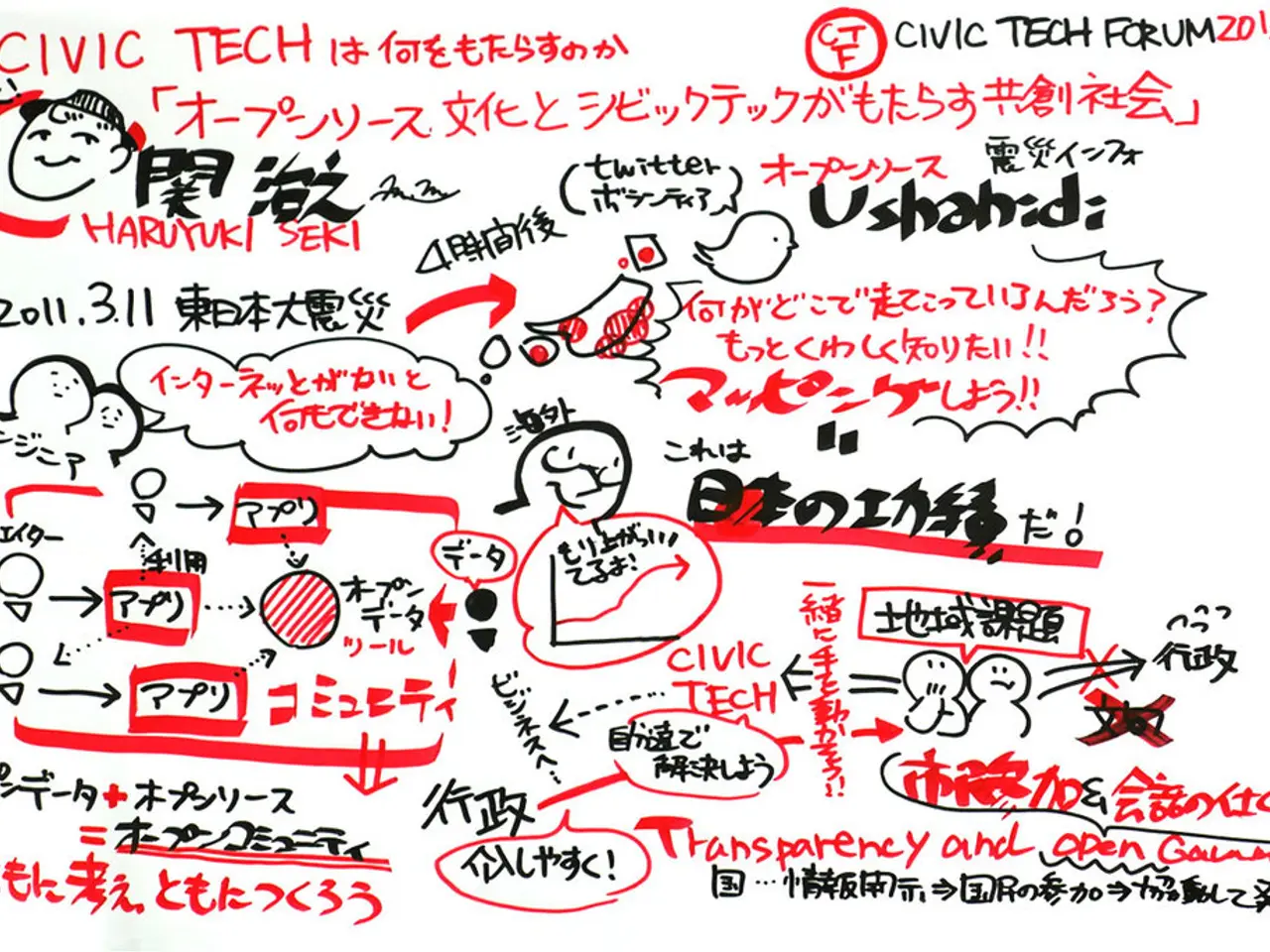Boosting Education: Practical Application of Graphic Representations for Improved Learning Experiences
Graphic organizers are a valuable tool in educational settings, offering numerous benefits that can help students organize and retain information more effectively. By visually mapping out concepts, graphic organizers enable students to better understand and retain knowledge, see connections and patterns, and express ideas non-verbally.
Boosting Learning Outcomes
One of the key advantages of graphic organizers is their ability to improve organization and retention. The visual nature of these tools helps students structure thoughts in a clear and concise manner, making complex information more digestible. This, in turn, leads to better understanding and more consistent learning outcomes, particularly in diverse educational settings.
Enhancing Communication and Interaction
Graphic organizers also boost communication skills, as they enable students to express ideas non-verbally. This is particularly beneficial for those with communication challenges, such as students with autism. Additionally, graphic organizers facilitate collaboration and peer-to-peer learning by encouraging group work and social interaction.
Effective Incorporation into Teaching Methods
To maximize the benefits of graphic organizers, educators can incorporate them into their teaching methods in various ways. Adaptability is key, as graphic organizers should be tailored to meet individual needs. Pre-reading, during-reading, and post-reading strategies can also be employed to help students prepare, process, and reflect on the material.
Hands-on learning activities, such as creating their own graphic organizers, can strengthen students' learning and memory. Graphic organizers can also be used as part of a universal design for learning strategy to ensure that all students can access and process information effectively.
Examples and Future Trends
Common examples of graphic organizers include Venn diagrams, cluster webs, story maps, concept maps, flowcharts, and mind maps, each serving unique educational purposes. As the educational landscape evolves, future trends in graphic organizers include increased integration of digital tools, collaborative graphic organizers, personalization in design, and their use in blended and remote learning environments.
Overcoming Resistance and Challenges
Despite their numerous benefits, there may be resistance to using graphic organizers. To overcome this, targeted professional development, demonstrating real-life examples, and providing ongoing support can be effective. Common challenges in using graphic organizers include misconceptions about their suitability only for visual learners, their simplistic nature, their limitation to certain subjects, and the need for proper design and implementation.
Impact on Teaching Methods
The use of graphic organizers has a lasting impact on teaching methods, facilitating clear communication, cognitive organization, critical thinking, and fostering a collaborative learning environment. By improving student engagement, motivation, and ownership over their learning, graphic organizers contribute to a more effective learning environment.
In conclusion, graphic organizers are versatile tools that can be effectively incorporated into various subjects and teaching methods. By understanding their benefits and strategies for effective implementation, educators can harness the power of graphic organizers to enhance learning and engagement in their classrooms.
- Incorporating graphic organizers into remote learning environments can help students visually map out concepts, contributing to better understanding and retention through e-learning.
- Professional development for educators can focus on the effective use of digital graphic organizers, allowing them to enhance the educational-and-self-development of their students in blended and remote learning settings.




